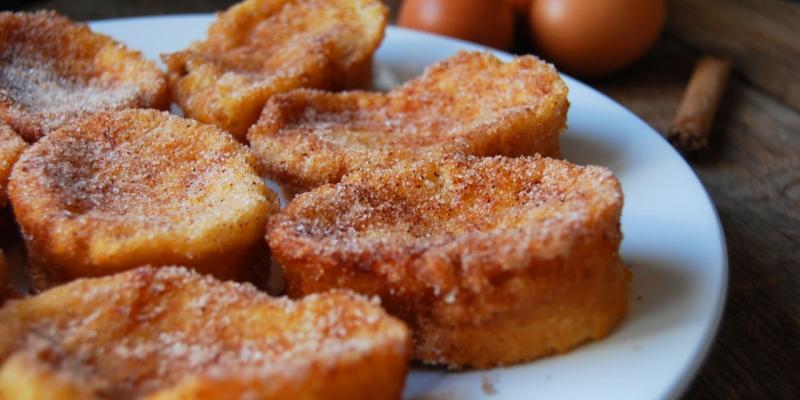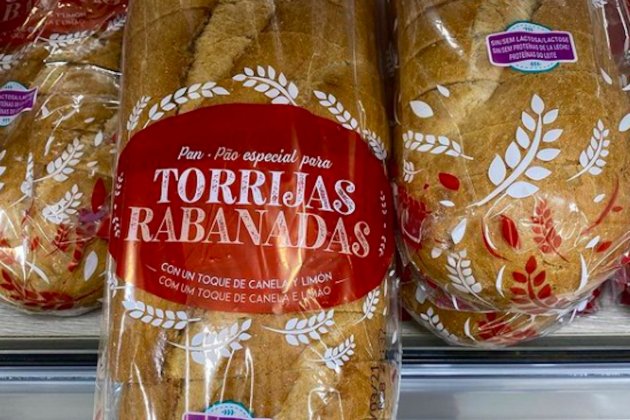
It's Torrija time! Torrijas are a typical recipe at Easter, so there is clearly no better time than the present to give this heavenly treat a go! And if you like them you don't need to wait until next Easter to make them again, just crack on! They are really easy to make.
It basically consists of a few slices of Torrija bread, soaked in plenty of milk or sweet white wine, previously infused with citrus peel and other spices. It is a very easy recipe to make and it is absolutely delicious. Here I am going to give you both recipes for making Torrijas; either with wine or milk.
INGREDIENTS FOR ABOUT 15 TORRIJAS:
300g of special bread for Torrijas - available in your local bakery or Mercadona - (you can use a loaf of brioche if you can find Torrija bread)
Orange and lemon peel.
1 cinnamon stick
1/2 branch of vanilla
800ml of sweet white wine or 800ml of milk
2 eggs
Vegetable Oil, to fry them
200g of sugar (only if they are milk or if you are making the syrup option)
3 tablespoons of sugar and one of ground cinnamon

Steps to follow:
1.- If we are going to make them with wine, heat 800 ml of sweet white wine together with the citrus peels, the vanilla and the cinnamon stick and, just before it starts to boil, remove it from the heat and let it cool down. The wine will be impregnated with the flavour of cinnamon, vanilla and citrus but it may be very rich for some of you, but this is the traditional way.
If necessary, to weaken the intensity of the wine, something that is often done is to only use only 400 ml of wine and prepare a syrup with 400 ml of hot water and 200 g of sugar (maintaining 800 ml of liquid). Then you mix and heat it with the same ingredients as before.
2.- If we make them with milk, we put the milk in a bowl, together with the same ingredients as with the wine, but also adding 200g of sugar. We heat the milk with all these ingredients and, just before it starts to boil (we don't want the milk to boil as it takes on an unpleasant taste), cover the bowl, and let it infuse for at least 2 hours.
3.- Cut the bread into slices, if it is not already cut. They should be 2 or 3cm thick. Lie them flat in a large container, such as the baking tray, leaving a small gap between one slice and another.
4.- Pour the liquid of choice over them: wine or milk, previously strained to eliminate the citrus peels, cinnamon and vanilla. Let everything rest for about 5 minutes so that the bread soaks up and absorbs the wine or milk.
5.- After 5 minutes turn the slices over one by one so that they can start soaking up on the other side. Leave them for another 5 minutes.
6.- Now, we are going to dip the Torrijas in beaten egg and fry them. Do this very carefully because the bread will be very soggy and can easily fall apart. So one by one, pick them up carefully with your hands or a spatula, and dunk them in the egg and then fry them in abundant and very hot vegetable oil (180ºC). Fry for about 1 minute on both sides. Then let them rest on some kitchen towel.
7.- Finally, when you have fried all the Torrijas and they have cooled down a little, we need to mix three tablespoons of sugar on a plate and a tablespoon of ground cinnamon. Sprinkle the mixture over both sides of the Torrijas.
Now they are ready to eat! However, it is better to eat them once they have cooled down completely. It is not necessary to refrigerate them and they will last for several days but, the truth is, they will probably be eaten before they go bad!
Enjoy!